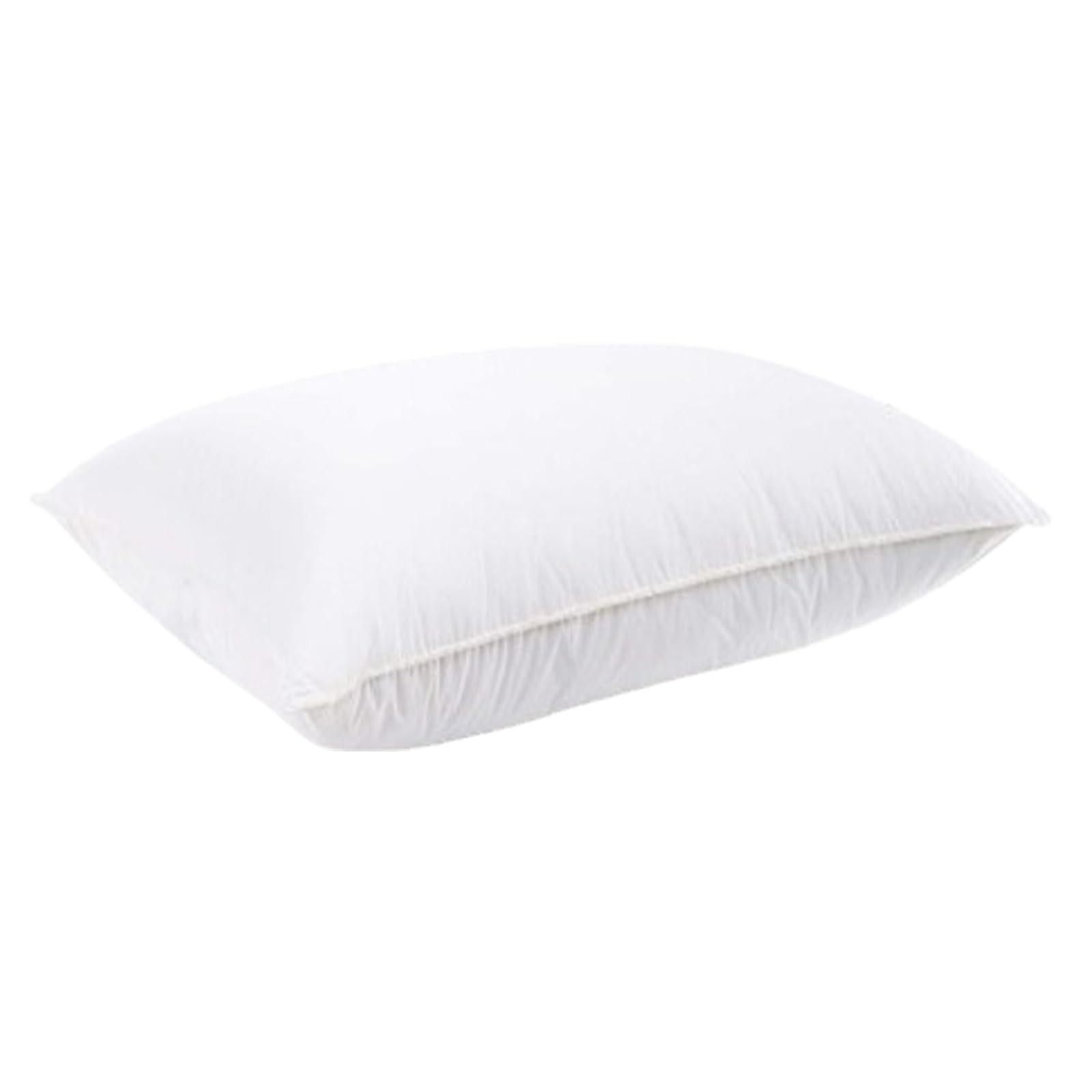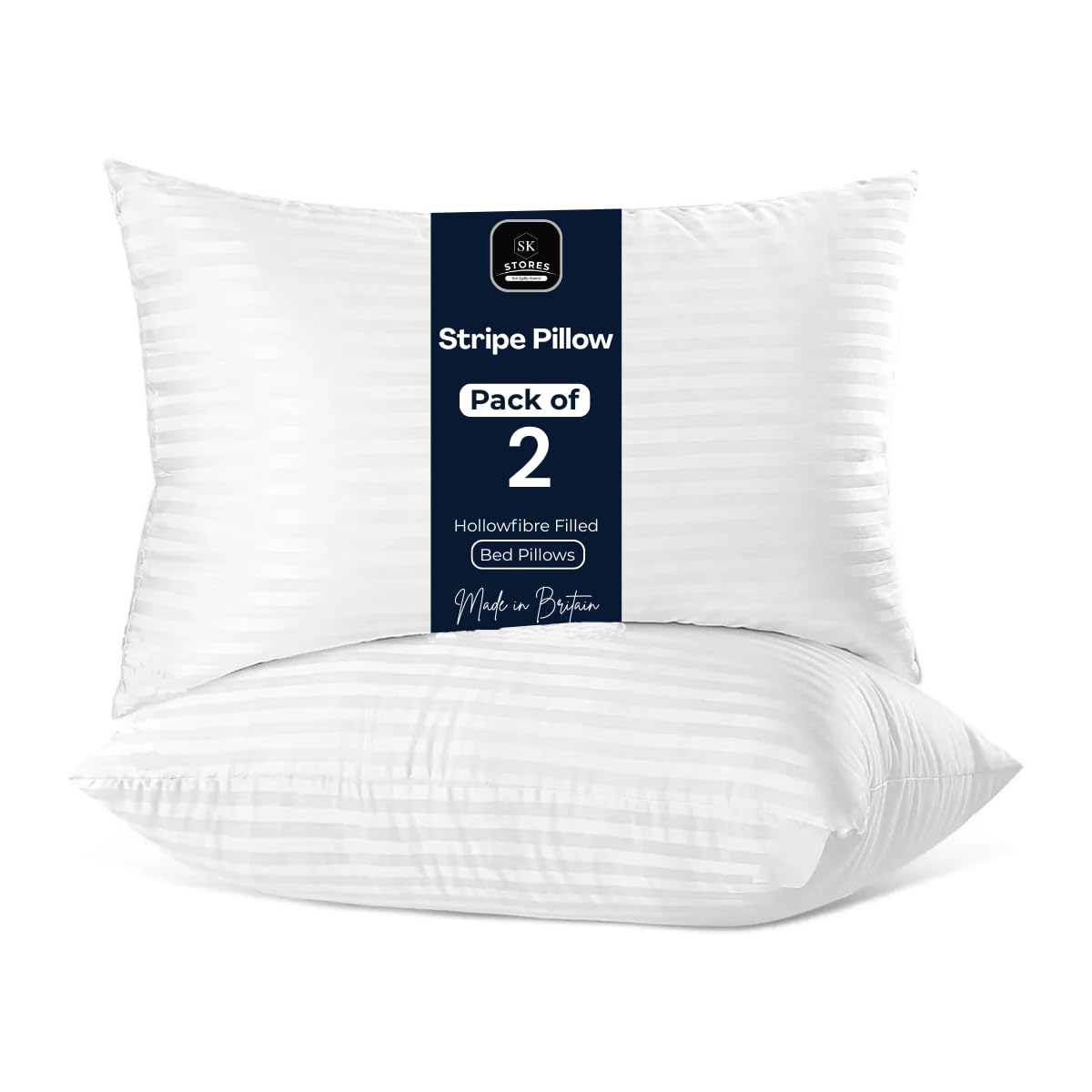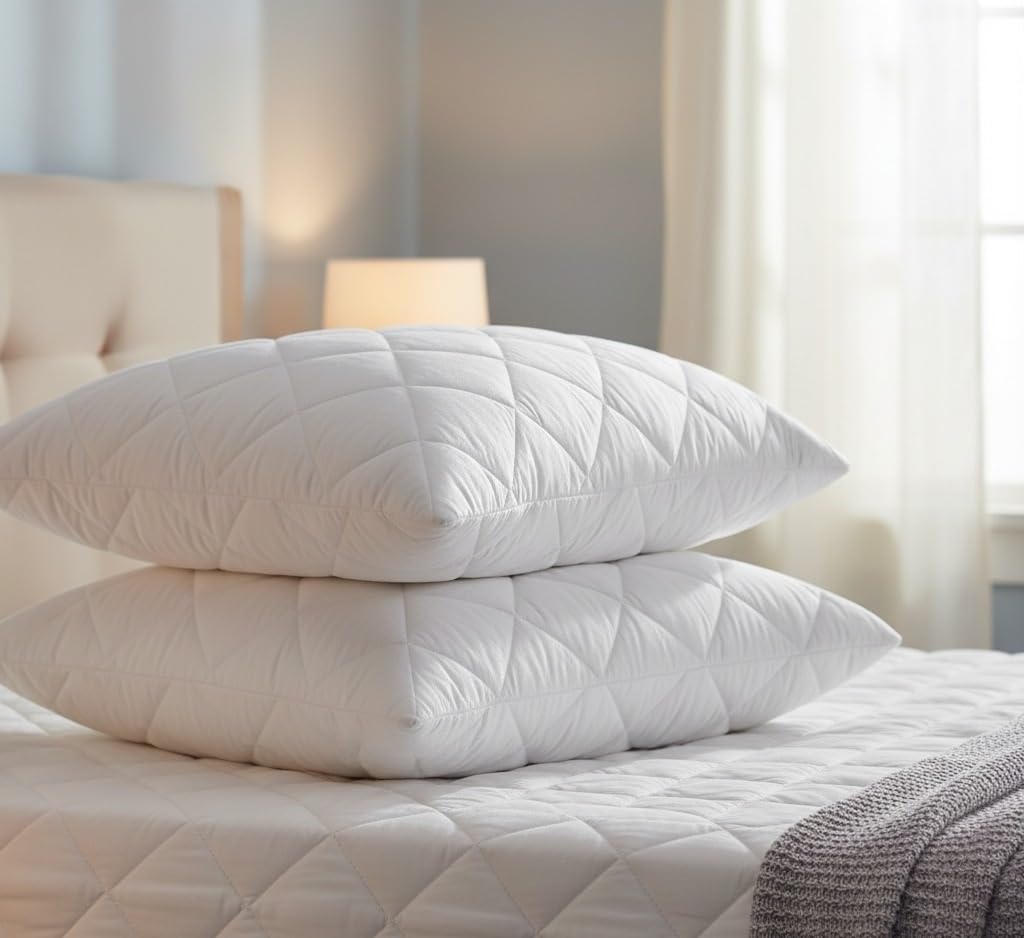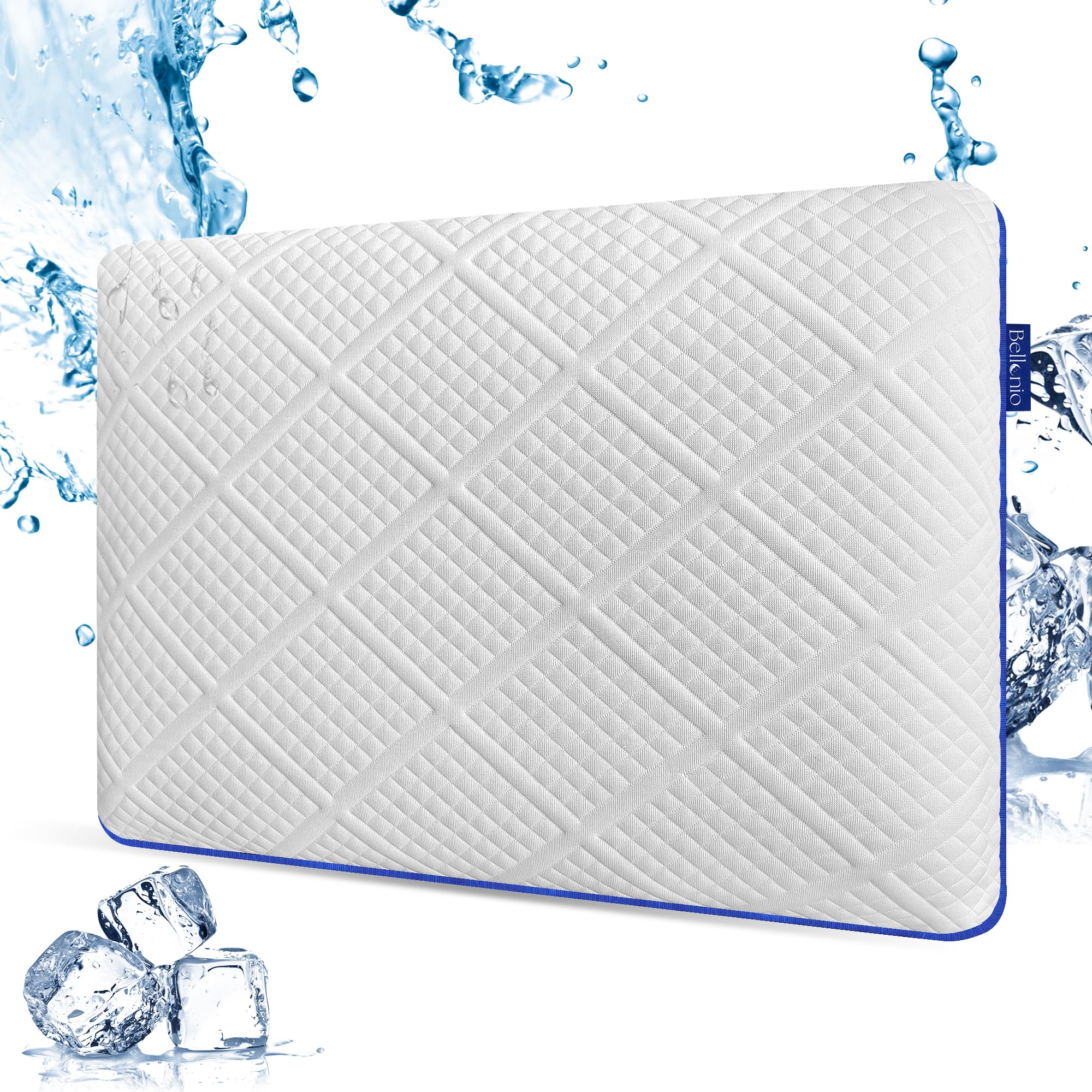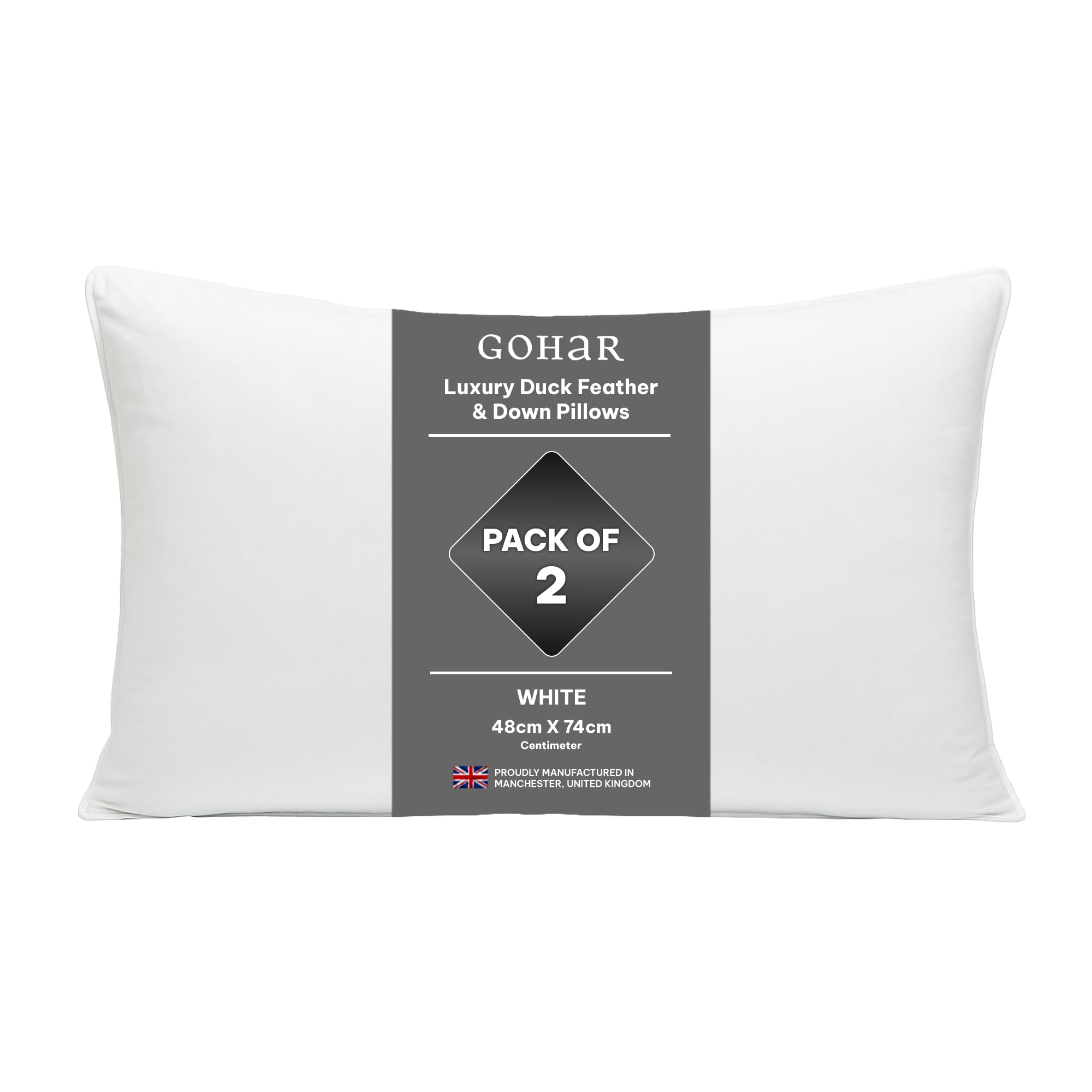Stomach sleeping can relieve snoring and feel familiar, yet it places the neck in a rotated position. The right pillow keeps the neck as neutral as possible and reduces lower back strain. This UK guide explains how to choose a thin pillow that still feels soft, how mattress firmness changes your needs, and small tweaks that make this position more comfortable without pushing you to change sleep style overnight.
Neck comfort starts with pillows matched to sleep position and consistent loft.
Why thin matters
Thicker pillows tilt the head back and strain the neck when you sleep on your front. A thin pillow keeps the head closer to the mattress so your neck muscles do not work all night to hold a rotated position. If you wake with neck ache or a tight jaw, your pillow is likely too tall. Aim for a pillow that compresses to two to six centimetres under the head depending on your body and mattress.
Materials that feel soft at low loft
Shredded foam pillows can be adjusted to a very low fill and still feel soft. Latex in thin profiles offers support with a springy feel, though some find it too bouncy for stomach sleep. Soft fibre pillows are affordable and compress nicely, but they flatten faster and need replacing more often. Memory foam can work if it is a thin, very soft slab that allows your face to settle without pushing the head up. Try options that specify a low loft design rather than cutting down a thick pillow.
Match pillow to mattress firmness
On a soft mattress, your chest and head sink further, so you can use a slightly thicker thin pillow. On a firm mattress, you sit higher and need the thinnest possible pillow to avoid craning the neck. Test on your actual mattress. A pillow that feels fine on a showroom bed can feel different at home.
Face pressure and breathing
Choose a pillow that lets you rest with your head to the side without pressing hard on your nose or mouth. A soft, low pillow with a smooth cotton pillowcase reduces friction on the face. Some stomach sleepers cut a small channel into a foam pillow to improve breathing comfort, though buying a purpose made thin pillow is simpler and neater.
Lower back comfort
Stomach sleeping can arch the lower back. A thin pillow under the hips reduces arching so your spine stays closer to neutral. This small change often eases morning stiffness. Use a soft towel or a small, flat cushion if you do not want multiple pillows on the bed.
When to try a gradual change
If neck pain remains despite a thin pillow and hip support, consider a slow shift toward side sleeping. Use a body pillow to prop you at a three quarter position, which reduces neck rotation while still feeling familiar. Many people who think they only sleep on their front discover they can settle comfortably on the side with slight support.
Low‑loft, soft pillows and slim latex options feature in pillows for stomach sleepers. Full‑body comfort often pairs with a topper to soften a firm mattress and breathable sheets.
FAQs
How thin should a stomach sleeper pillow be?
Very thin. Many people do best with a pillow that compresses to around two to four centimetres. The exact height depends on mattress firmness and body shape.
Is no pillow better?
Some stomach sleepers prefer no pillow under the head and a thin pillow under the hips. If you wake with face pressure or numbness, try a very thin head pillow instead.
Will a thin pillow fix my neck pain?
It helps, but neck pain can also come from daytime posture and stress. Combine a better pillow with gentle stretches and consider reducing stomach sleep time if pain persists.
